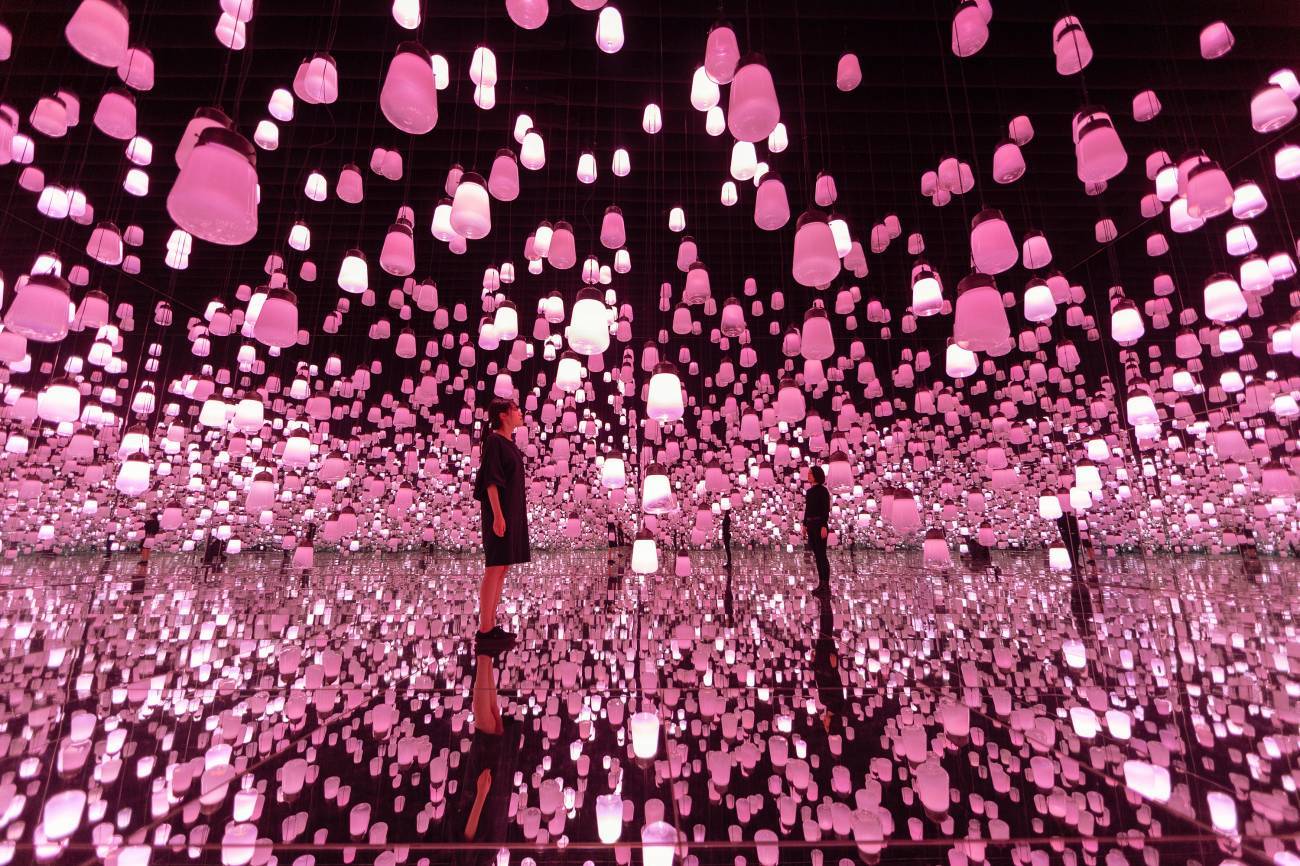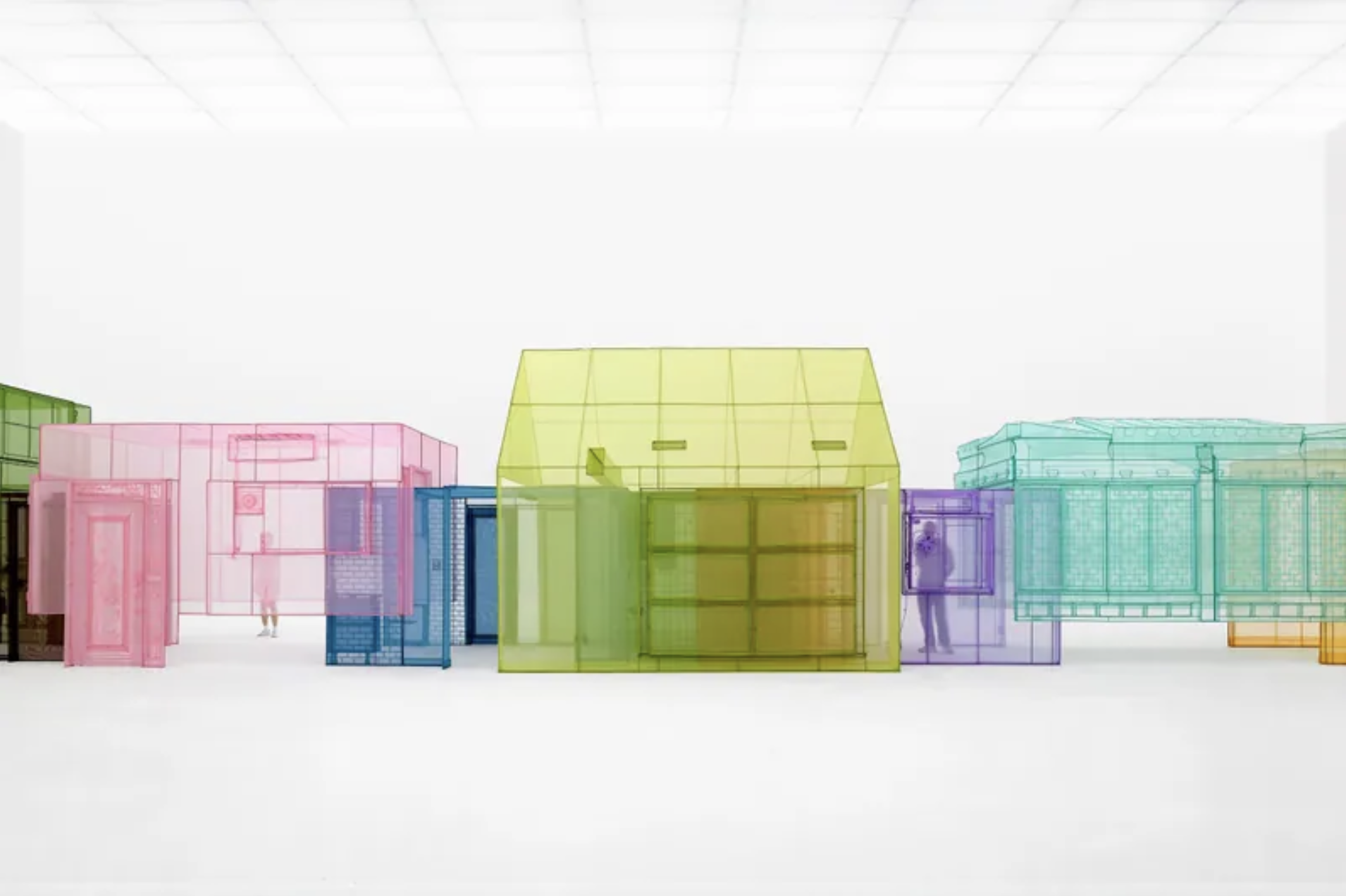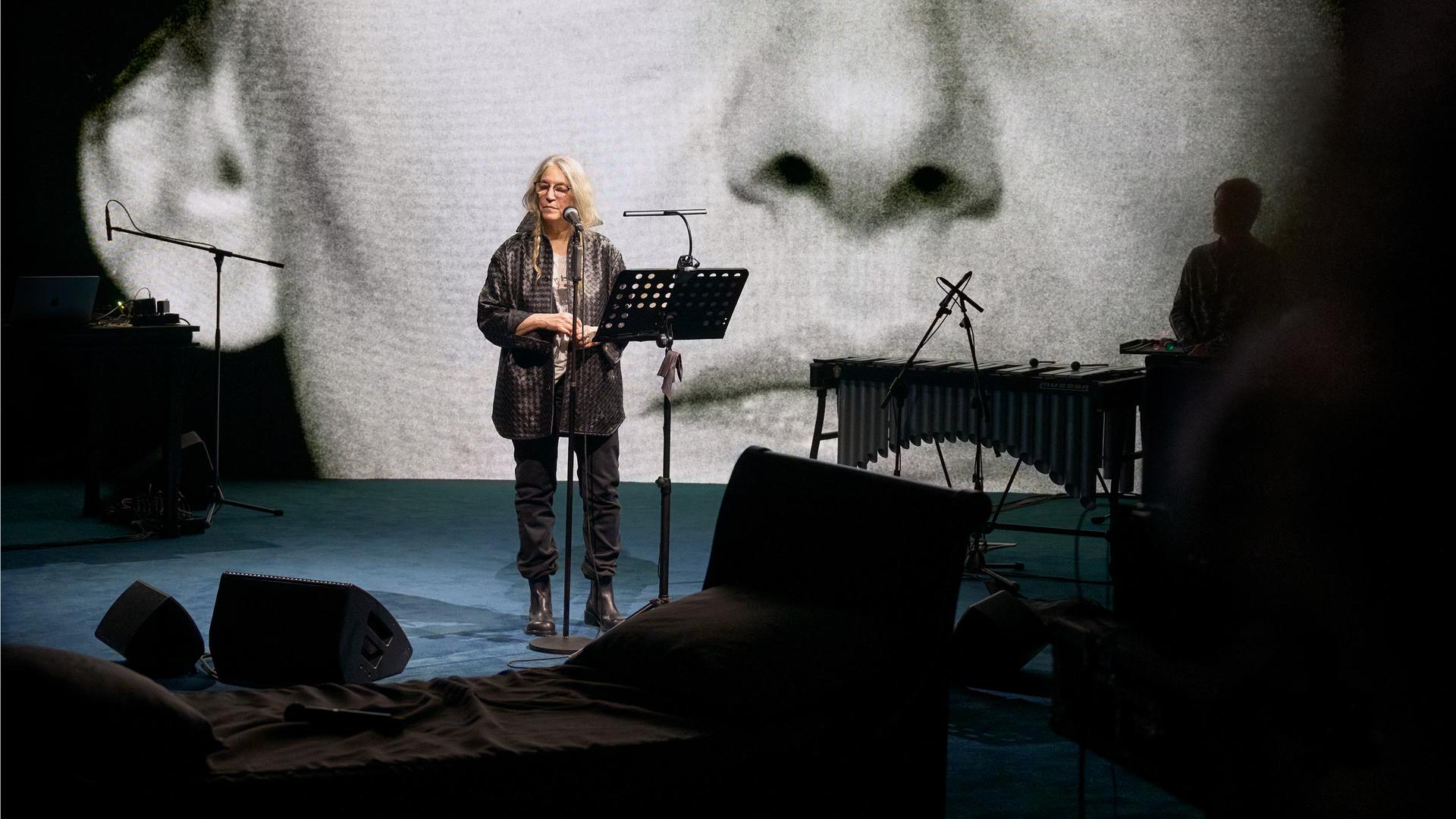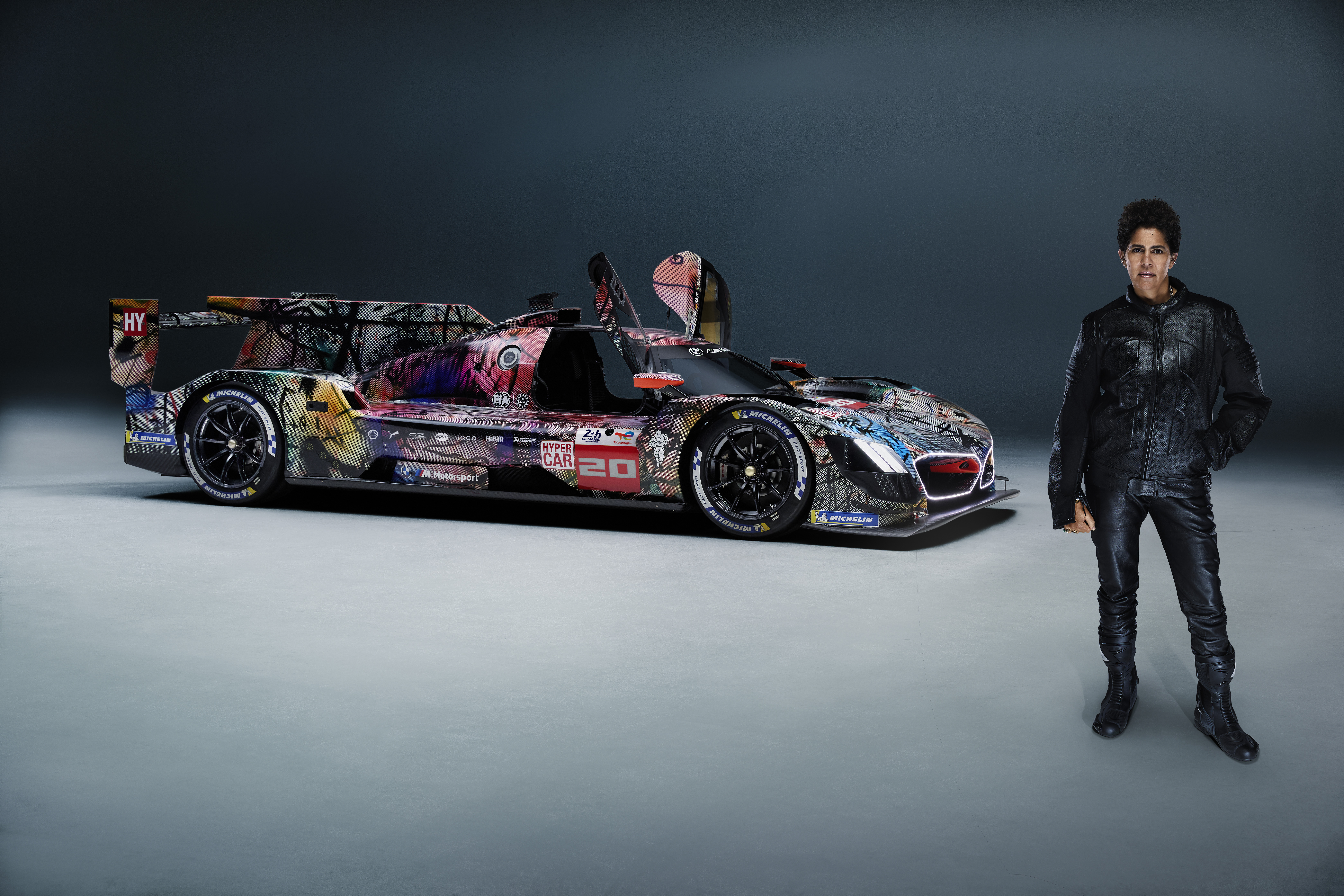Before the modern era in Japan, Kasane no Irome (nuances of layered colors) were seasonal colors created in silk. The complicated colors were the result of a combination of front and back colors (silk at the time was so thin that the liner was transparent, creating more nuanced colors), overlapping color gradations, complex weave colors, and combinations of warp and weft. The lamps in this exhibit shine brightly and then fade; and in the light, we can see the spring Kasane no Irome color: Cherry Blossoms.
When a person stands still close to a lamp, it shines brightly and emits a color that resonates out. The light of this lamp becomes the starting point, and it spreads to the two nearest lamps. The light from the two nearest lamps transmits the same color to other lamps, one after another, spreading out continuously. The light transmitted from the lamp always resonates out as a bright light once, passing to close lamps, till all lamps have shone brightly once, and then returns to the first lamp. The light of the lamp in response to human interaction, divides in two, becomes one optical line through all lamps respectively, finally, meeting at the first lamp that became the starting point.
When a resonating light encounters the light originating from another person, the lamp light glows a combination of all the light that reaches it at that point, and for an extended period of time. If a light comes from the other side of the room, it means that there is someone else there. People become aware of the presence of others in the same space.
All the lamps, seemingly scattered randomly, have a single connecting line (unicursal) that can be drawn. When drawing a line, the stroke (the same starting and ending points) is drawn from a lamp to a lamp that is closest in distance in three-dimensions. By arranging the lamps in this way, the light of the lamp corresponding to the person is always propagated to the nearest lamp, and must always pass through all the lamps of the stroke without fail, and will finally got back to the first lamp that became the starting point.
The arrangement of the lamps is mathematically determined to satisfy a number of restrictions outlined below. A large number of solutions were evaluated that take into account the variation and distribution in the height, direction of the lamp, and the smoothness of the three-dimensional path (light trajectory) ,
The plan layout of the hanging lamps is a uniform staggered arrangement, that forms an orderly grid. This is the first constraint. The second constraint is to set the boundary condition of the physical space, the height of the floor and the ceiling, and the height and the width of the passage through which a person can pass. And the third constraint is that when a line is drawn from any lamp to another lamp in three dimensions, the starting point and the ending point are connected as a single line (unicursal).
Since the arrangement of the lamps born from such a process seems to be random at first sight, the trajectory of light can not be predicted, the light continues to the lamp physically closest, and gives a natural feeling – like a fire burning. And since the light trajectory of the lamp is connected by a single line, the light born from any particular lamp and the light born from any other lamp, will always cross each other.
The arrangement of the lamps is not only beautiful in a static way, but also in a dynamic way when activated by people in the space. It demonstrates the space of a new era that can be designed freely and change itself through digital technology, and that adapts and changes due to the movement of people in it.
teamLab Borderless
Odaiba Palette Town
1-3-8 Aomi, Koto-ku
Tokyo, Japan




